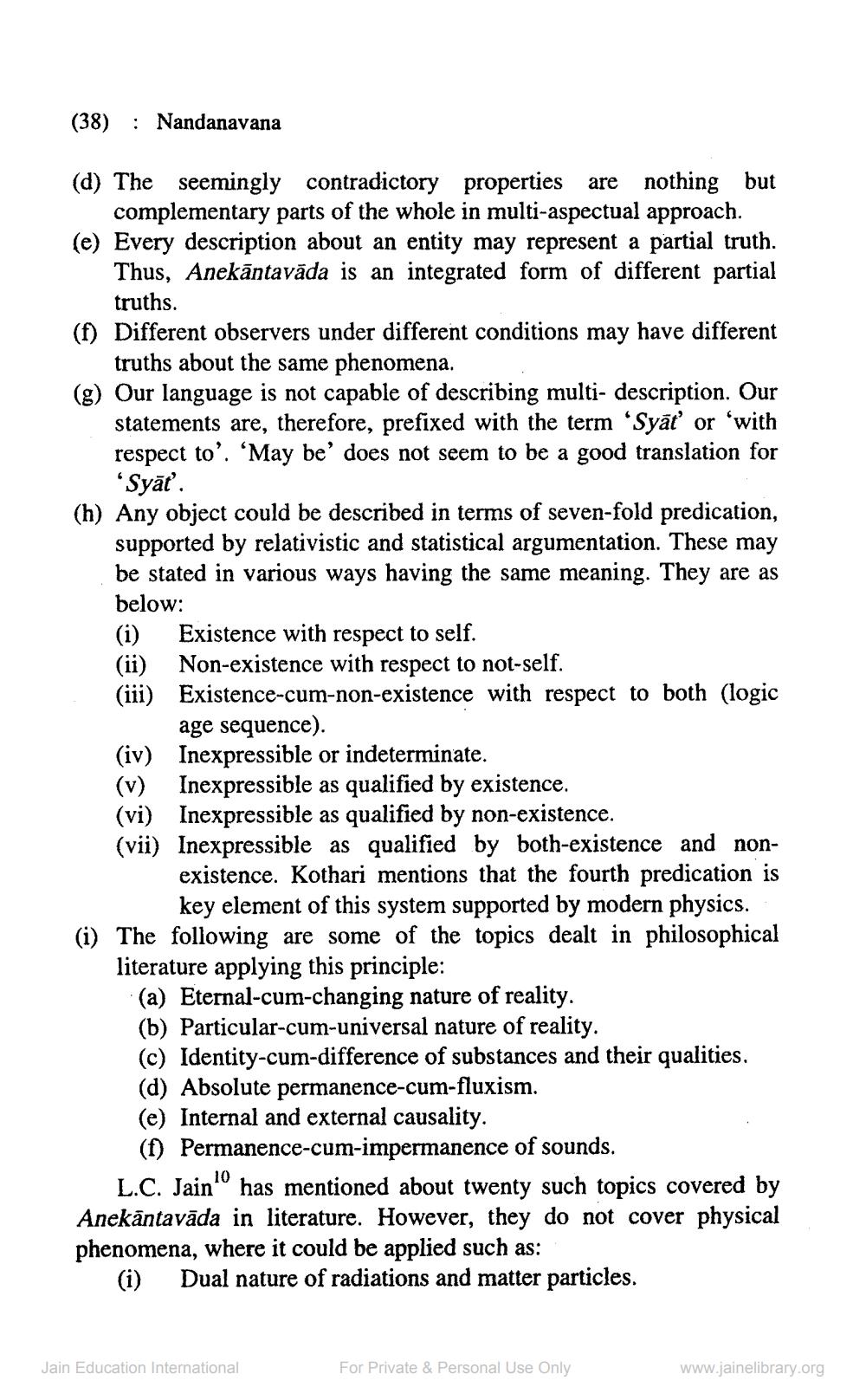________________
(38) : Nandanavana
(d) The seemingly contradictory properties are nothing but
complementary parts of the whole in multi-aspectual approach. (e) Every description about an entity may represent a partial truth.
Thus, Anekāntavāda is an integrated form of different partial
truths. (f) Different observers under different conditions may have different
truths about the same phenomena. (g) Our language is not capable of describing multi- description. Our
statements are, therefore, prefixed with the term 'Syāt' or 'with respect to'. 'May be' does not seem to be a good translation for
'Syāt. (h) Any object could be described in terms of seven-fold predication,
supported by relativistic and statistical argumentation. These may be stated in various ways having the same meaning. They are as below: (i) Existence with respect to self. (ii) Non-existence with respect to not-self. (iii) Existence-cum-non-existence with respect to both (logic
age sequence). (iv) Inexpressible or indeterminate. (v) Inexpressible as qualified by existence. (vi) Inexpressible as qualified by non-existence. (vii) Inexpressible as qualified by both-existence and non
existence. Kothari mentions that the fourth predication is
key element of this system supported by modern physics. (i) The following are some of the topics dealt in philosophical literature applying this principle:
(a) Eternal-cum-changing nature of reality. (b) Particular-cum-universal nature of reality. (c) Identity-cum-difference of substances and their qualities. (d) Absolute permanence-cum-fluxism. (e) Internal and external causality.
(1) Permanence-cum-impermanence of sounds.
L.C. Jain" has mentioned about twenty such topics covered by Anekāntavāda in literature. However, they do not cover physical phenomena, where it could be applied such as:
(i) Dual nature of radiations and matter particles.
Jain Education International
For Private & Personal Use Only
www.jainelibrary.org




